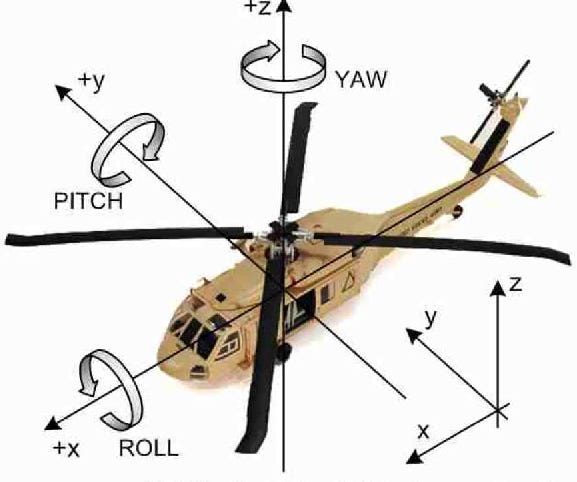Welcome to the last post of the year! I can’t believe we’re at the new year already. I excited to keep writing into 2024 and beyond and have been very grateful to the reception this blog has gotten this year.
I remember graduating from my teacher training program and being told that Instagram would be a good platform for my information on the Alexander Technique. That never quite sat right with me as a medium. When I moved to Brooklyn in 2022, Veeral Shah suggested I start a Substack and I’m quite glad he made the suggestion. Nine months in to this project and this blog has readership in 24 countries and 29 US states. However you’ve chosen to participate in this project, you have my sincere thanks.
In the best interest of this readership, I’ll point out ways that you can communicate with me.
On Social Media/In the Comment Section of Articles: I post notifications of my new articles on the various outlets. You can ask questions to me there and I’ll do my best to answer.
As a Substack Note: If you’re into all the Substack features, Substack let’s you rather easily highlight a sentence or paragraph and ‘re-post a note’. It’s their version of a tweet and it will allow you to get right to the heart of a passage that you want answers to. I’ll should get a notification of your question and I’ll do my best to get back to you promptly.
As a Substack Chat Message: If you have downloaded the Substack app, you’ll find that there’s a chat feature. I’ve opened up the chat to all subscribers and you are welcome to ask me anything there. For example, my student this morning asked me for thoughts about lying on the stomach and its relationship to practicing back bends. I’m not ready to write a blog post on this yet, but if you’re blocked with something, ASK!
Where this Blog Goes
I have two big sources of inspiration when it comes to conveying written information: David McKay’s book on Information Theory, and Dave Liebman’s music blog. Both are written with exacting care and present topics in a way that the student will benefit from multiple readings. If my project is successful, this blog will evolve into a full digital resource which takes the student from complete novice to fully independent mastery of the concepts.
The preface to McKay’s book is a work of art as far as I’m concerned. He has written 50 chapters on the topic of Information Theory and these topics can be organised into short beginner level courses, medium length graduate courses, or post-graduate self education courses.
I intended to do something not quite as good as that. It will act as a way to navigate the information spread across FM Alexander’s 4 books and pull in supplemental information based on my private lessons and personal development.
Please consider sharing this project with someone you know!
On to the Blogsssss!!!!!
Last week, I wrote a post called What Does “Putting the Head” Look Like?. Check it out or this week won’t make as much sense!
If you’ve gone through the simple act of moving your head in the directions I highlighted, you’ll notice that I did not highlight all of the movements of the skull. After all, you can look left and right!
Left and right were omitted because I was only highlighting the degrees of mobility that you can achieve through the top joint in the body where the skull meets the top of the spine; the atlanto-occipital joint. The second from the top joint in the body is just below the atlanto-occipital joint. This joint is formed by the meeting of the first and second vertebra of the spine; the atlanto-axial joint. This joint lets you look left and right!**
It can be rather exhausting to think of all of these anatomical degrees of freedom. In fact, I think it’s weeeiiiird! After all, when have you ever considered such a thing in your life? `It’s not what is covered in a yoga class (at least at the beginner level) and it certainly was not covered in my childhood physical education classes. I think those classes were better called “Run around, have fun, and please don’t hurt yourself or anyone else if you can possibly avoid it.”.
I made it through those classes unscathed.
So how can I very accurately describe the feeling that you get when all of these degrees of mobility are alive and well functioning? We use words like forward, backward, left, right, up, and down. Those are accurate. But we also have degrees of movement involving pitch, roll, and yaw. Add all of these up, and our head can move about through space in much the same way that a helicopter moves!
As you can see, in my previous post, I used the phrase tilt the head up/down. In the aviation world, pitch would be the more accurate word. I still fully intend on saying ‘look to the left’ rather than ‘yaw left’, but I can also see myself getting stranger as I age and asking people to “Get to the Chop-pah!” during a lesson.
I like this Choppa!! metaphor for the movement of the head because it is relatively accurate and simple for all practical purposes is life. The only way to improve on this image is to start learning more anatomy. Let’s save that for your post graduate work. ;)
To give the image even more power, I’d like you to remember that the centre of the weight of your head is located somewhere between your temples (roughly speaking). This is where the pilot of your helicopter sits and steers the mechanism with thought and exploration. When I feel like pressure is building on top of my neck, I do not necessarily know that my head is back and down (for example). What I can do, is imagine my pilot has his helicopter caught between some buildings with power lines. I can explore all of the degrees of freedom of my head with great subtlety - subtlety so great you might not notice my head moving at first glance - and find how to find that wondrous sensation of the weight of the skull being NOT DOWN on the neck.
You can fly your chopper anywhere. But you will find that you feel rather bad when the chopper begins to set down for a landing. Find that experiences of the chopper NOT DOWN and you are well on your way to a great understanding of Opposition 1; the Primary Control of your organism.
** If this anatomical terminology has frightened you, ask me a question! It was strange to me in the beginning but I’m using it here because it is the clearest way to describe exactly what I’m talking about without the aid of pictures and videos.





Another quality post. I think that from reading your post the way I move my head, and think about how I move it, has changed. I also catch myself looking at people in shops etc and seeing how they seem to move their bodies too. Thank you so much.
The helicopter analogy is very powerful! And the pilot is essential!